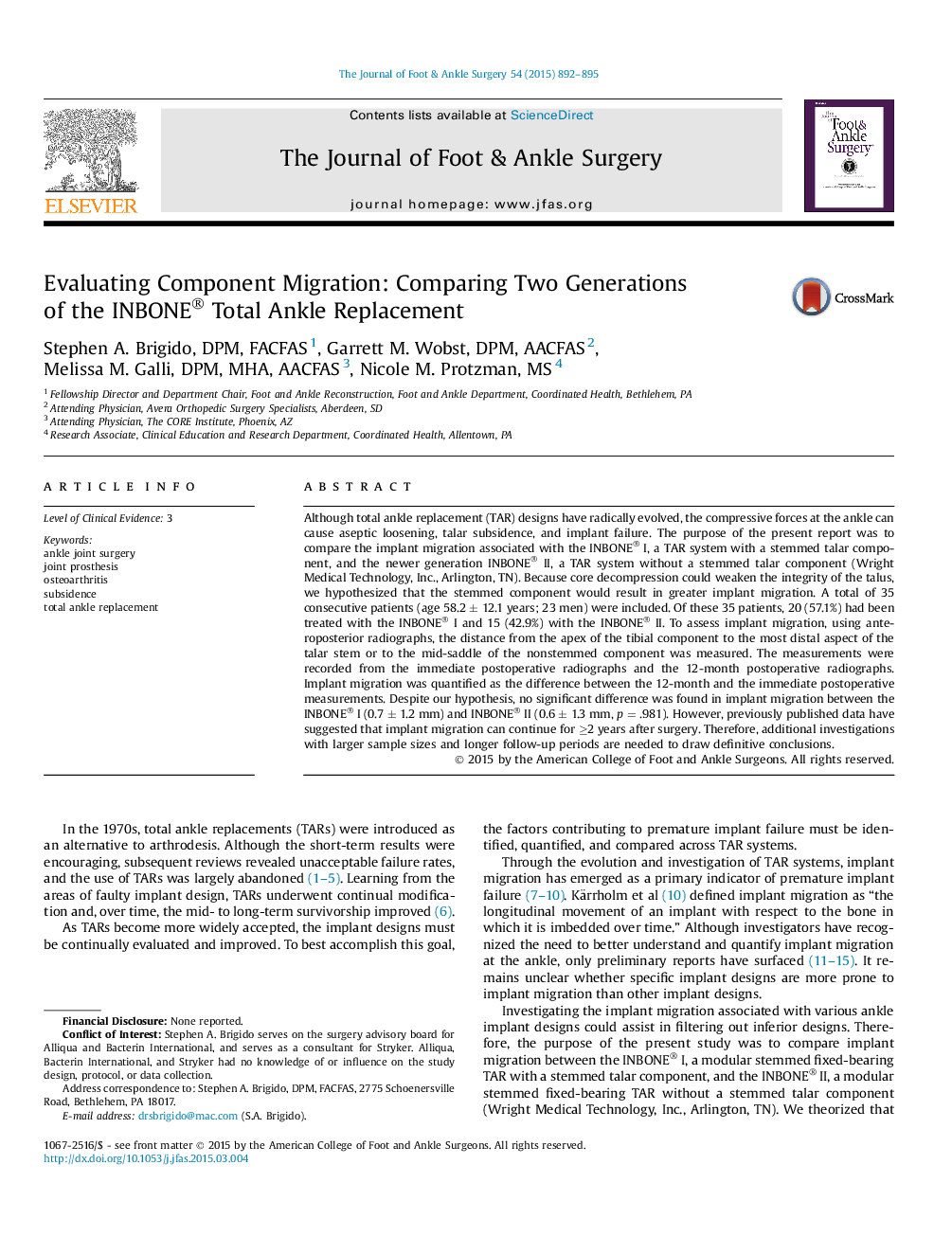| Article ID | Journal | Published Year | Pages | File Type |
|---|---|---|---|---|
| 2713011 | The Journal of Foot and Ankle Surgery | 2015 | 4 Pages |
Although total ankle replacement (TAR) designs have radically evolved, the compressive forces at the ankle can cause aseptic loosening, talar subsidence, and implant failure. The purpose of the present report was to compare the implant migration associated with the INBONE® I, a TAR system with a stemmed talar component, and the newer generation INBONE® II, a TAR system without a stemmed talar component (Wright Medical Technology, Inc., Arlington, TN). Because core decompression could weaken the integrity of the talus, we hypothesized that the stemmed component would result in greater implant migration. A total of 35 consecutive patients (age 58.2 ± 12.1 years; 23 men) were included. Of these 35 patients, 20 (57.1%) had been treated with the INBONE® I and 15 (42.9%) with the INBONE® II. To assess implant migration, using anteroposterior radiographs, the distance from the apex of the tibial component to the most distal aspect of the talar stem or to the mid-saddle of the nonstemmed component was measured. The measurements were recorded from the immediate postoperative radiographs and the 12-month postoperative radiographs. Implant migration was quantified as the difference between the 12-month and the immediate postoperative measurements. Despite our hypothesis, no significant difference was found in implant migration between the INBONE® I (0.7 ± 1.2 mm) and INBONE® II (0.6 ± 1.3 mm, p = .981). However, previously published data have suggested that implant migration can continue for ≥2 years after surgery. Therefore, additional investigations with larger sample sizes and longer follow-up periods are needed to draw definitive conclusions.
